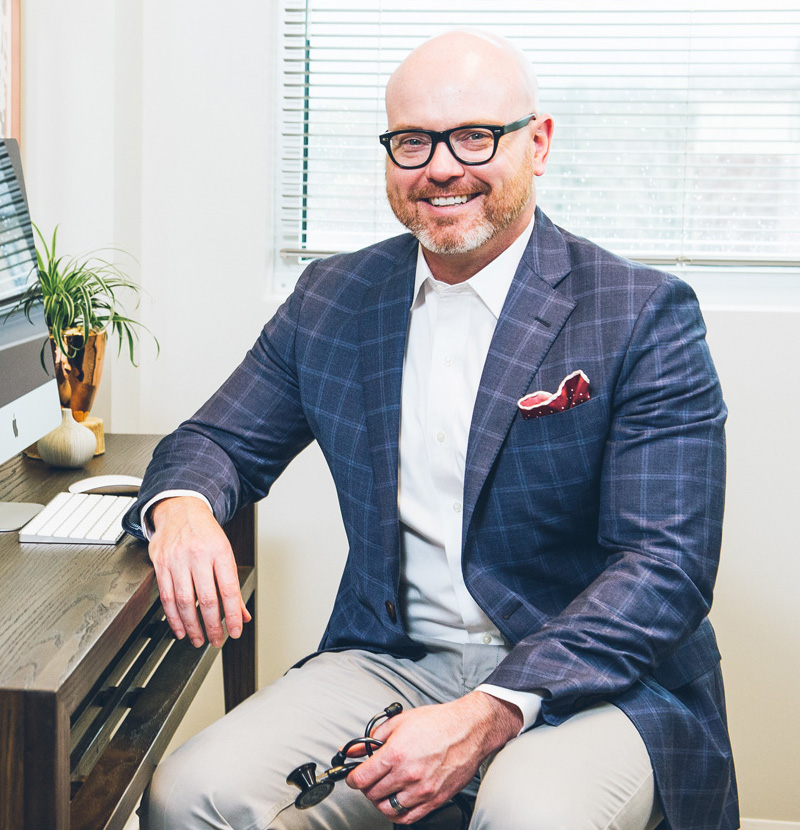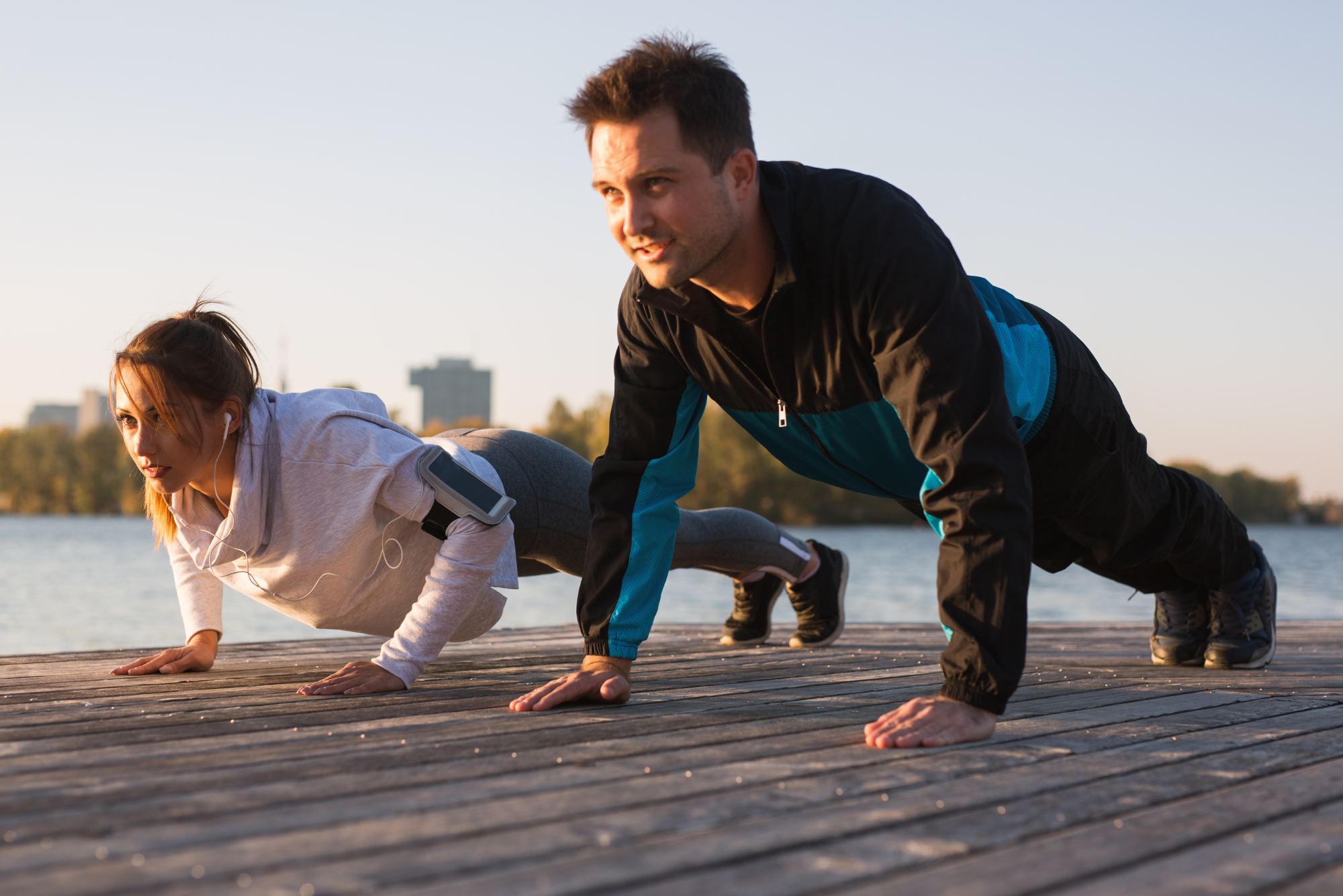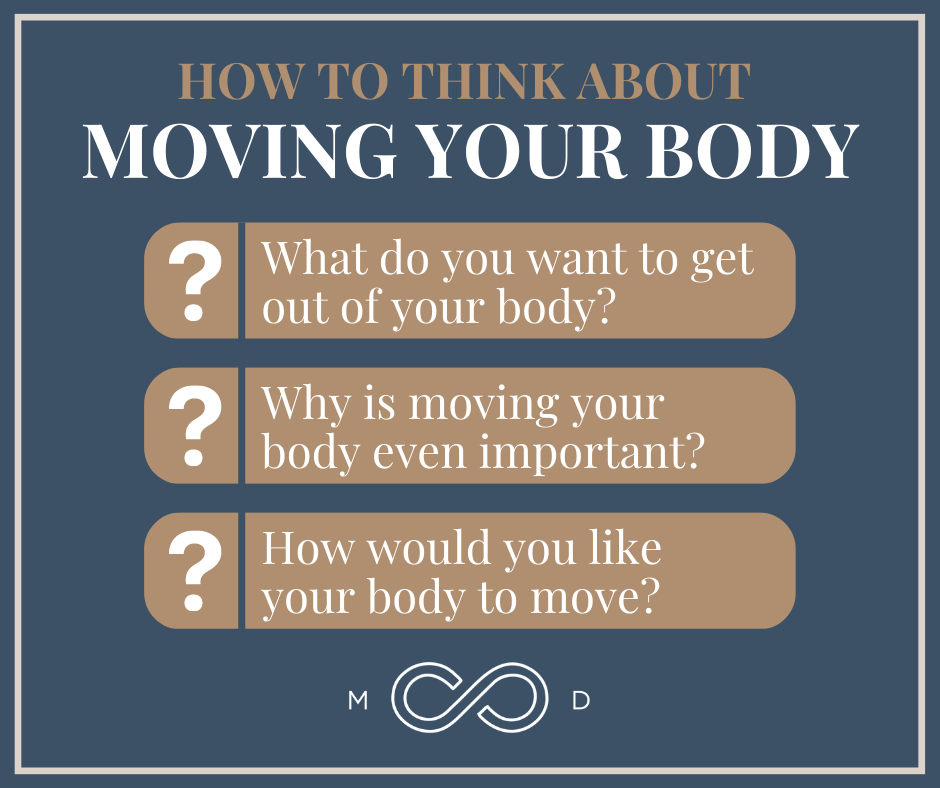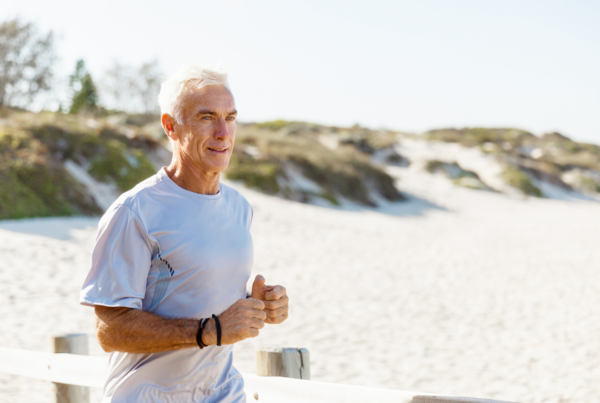Download file | Play in new window | |
This month, my podcast copilot Jen Justus and I get into part two of our three-part series, “The Three Pillars of Health.”
Part two is a subject we’re both deeply passionate about: how we need to move our bodies in the physical fitness journey toward our best self. That’s the reason we exercise: we deserve those results.
For a quick review, the three pillars are where we believe nearly all meaningful progress in one’s health journey takes place: how you feed, move, and recover your body.
To discuss each pillar, we’re taking a three-layered approach:
- Thinking — How should you be thinking about this topic?
- Experiencing — How do you experience this topic physically?
- Feeling — How will improving this area make you feel emotionally or spiritually?
In our last post, we talked about diet and our thesis on how most humans should feed their physical bodies for optimal health. In this post, we’ll talk about moving your body for optimal health.
Layer 1: How to Think About Moving Your Body
The starting point of every action is in the mind. And yet, we as a culture don’t spend much time getting into the right mindset before taking action.
For this reason, we’re starting with thinking. Before you even start exercising, what is the ideal way of thinking about moving your body?
This may seem abstract, but it’s actually very practical. We’re talking about asking questions like:
- What do you want to get out of your body?
- Why is moving your body important?
- How would you like your body to move?
Getting your psychology right is critical to your long-term success, because you need to know why you’re doing what you’re doing. From a goal-setting standpoint, for example, is your motivation internally or externally derived? Are you trying to please someone else, or are you doing this for yourself?
These motivations typically have different outcomes. If your motivation is about being the best version of you, about connecting with your authentic self, that’s a much more compelling reason to stay the course than trying to please a parent, spouse, or social group.
To illustrate internal motivation, I’ll share Jen’s and my stories.
Aaron’s Story
I spent the majority of my youth and young adulthood in great shape. I played lots of sports, and being fit was part of who I was as a human. I was fast and strong, and that was my identity.
And then life happened. I started a business, had a couple kids, and worked in the ER. Like most people, I ran out of discretionary time and had to trim down my schedule. Fitness and diet didn’t make the cut.
I gradually became a very unhealthy, fat version of myself.
About five years ago, I decided I’d had enough. It was time to fire “Fat Aaron.” My authentic self was someone who desired to be fast and strong, and I’d been disconnected from that for too long. I wanted to be true to who I was. That compelled me to begin this journey of recapturing my health.
We all know moving from a non-ideal physical version of yourself to being fit and healthy is difficult, especially in the beginning. You need some really compelling reasons to get you through the hard parts, because the fun and enjoyment aren’t immediate — they come way down the road.
I’m there now, enjoying confidence and satisfaction, but those came later. My motivation is what got me here.
Jen’s Story
Jen’s story is quite different from mine. She was born with congenital hip dysplasia and had surgery at six weeks old to correct it. They didn’t know if she would be able to walk, but, overachiever that she is, she went on not only to walk but also to be active in tennis and track during high school.
Later, she made great progress with weight loss through nutrition. After a suggestion from me, she also found a personal trainer to take her health to the next level. In addition to some strength training, she started HIIT workouts with her trainer once a week.
The HIIT exercise irritated her hip to the point that an orthopedic surgeon recommended a hip replacement. Feeling she was way too young to have that done, she instead found an amazing physical therapist who focused on strengthening her hips so she wouldn’t need surgery. With his help, she’s made amazing progress.
The thinking component of Jen’s fitness journey was when, in conversations with myself and her trainer, she identified in herself a strong “all or nothing” mentality around fitness that hindered her progress. For example, if she planned to wake up early to hit the gym but didn’t make it, she’d write off any exercise for the rest of the day.
In reality, just because she missed her ideal workout didn’t mean she was done. Maybe she could still show up for an abbreviated workout, or she could exercise after work instead. There were other options, but she couldn’t see them with her old mindset. After her thinking changed, though, she recognized that she could show up and do something most days of the week, even if it wasn’t a “perfect” workout.
Perfection — The Enemy of Progress
In my experience, the number one reason people start and stop (or never start) their health journey is perfectionism. If I can’t do it perfectly, I’m not going to do it at all. This is such a bad doctrine because there’s no such thing as perfection. Perfection is an illusion.
Perfectionism, then, is just a very elegant stall tactic. It lets you hide behind ideals and never take action. Overcoming that can be a major challenge for people.
The antidote to perfectionism is showing up for the sake of showing up. Even if that means just walking into the gym, saying hi, and leaving, you still made progress toward becoming a person who shows up at the gym. To make progress, you have to divorce yourself from the idea of perfection — because you’re on a journey toward the best version of yourself.
Commit to Showing Up for Yourself
When I was Fat Aaron, I wasn’t even sure I was going to work out 90% of the time. But I committed to at least showing up in my garage every morning. There was no excuse not to grab my coffee, put on a hoodie, turn on the heater, and start stretching. To just start doing something.
Do you know what happened by the time I was stretched and caffeinated? I thought, “I might as well get a little workout in.” And that kept happening.
Exercising is hard, but I have big reasons for it. So does Jen. We deserve the results. That’s why we work out.
Layer 2: The Experience of Moving Your Body
Once your mindset is right, you’ve identified with your ideal future self, and you have compelling reasons to begin the journey, what’s next?
You have to embrace the suck.
Let’s be honest: for most people, working out isn’t fun in the beginning. It feels sacrificial and draining. Your body feels weak, sore, and fatigued. And if you don’t have a great relationship with food, you struggle when exercise stimulates your appetite and hunger.
It’s a really complex loop you have to power through, and the only antidote we’ve found is your mindset.
Keep your eyes on the prize. Keep showing up. Believe that these growing pains are short-term feedback. The excitement, pleasure, enjoyment, and benefit you see in others will come later. You need to be anchored in these ideas.
Today, I crave my fitness training. It wasn’t like that in the beginning. But because I showed up for myself every single day for five years, it’s no longer work to show up. I’ve just become a person who shows up.
Movement in the Face of Physical Limitations
Jen’s initial experience involved physical pain and a limited range of motion because of her unique health variable. There was a very short list of things she could do at the time. She’d even been told not to do any weight-bearing exercise on her hip and to use other machines, like the elliptical or stationary bike — which she hated.
With the help of her physical therapist, though, Jen made progress. She kept showing up, even through the pain. She still remembers the first time she could walk on the treadmill without pain. When she reached the point where she could jog, she cried with happiness.
Now, Jen’s fitness is in a great place, her pain is manageable, and she sees fewer and fewer flares as the months go by. I’ve watched Jen manage the psychology of her physical journey from the sidelines for a while now. The net result has been an added layer of psychological and emotional toughness that matches the physical toughness she’s been developing.
Many people have some kind of physical reminder of a biomechanical deficiency or pain point. Maybe you have a rotator cuff injury, bad hips, a bad ankle, or bad knees. So even when you have your psychology right, and even when you’re a person who shows up and experiences benefits from exercising, long-term issues can still rear their heads.
For issues like these, you’ll likely always be tethered to this physical reminder of injury. But that doesn’t mean you can’t move your body and experience the benefits. It’s just an additional psychological layer you have to equip yourself to overcome. For example, in times when Jen’s pain flares up, she just transitions back to rehabilitation workouts until it improves.
Layer 3: Feelings in the Fitness Journey
We’ve talked before about the magic of doing difficult things and the idea that doing something hard in the short term makes the long term easy.
As we mentioned above, feeling great and enjoying workouts are late-stage findings in the fitness journey. They’re lagging indicators, not leading ones. You can’t rely on those feelings to get you through. In fact, it’s important to prepare for the fact that working out results in deferred gratification.
For this reason, it’s dangerous to use your goals as metrics to measure success in your fitness journey — those benefits come later. You can’t take long-term indicators as a short-term fuel source. In the beginning when things are hard, you’ll only feel discouraged if you look for reassurance there.
Fitness isn’t instant; it’s gradual. And it’s a net score game. You take two or three steps forward, then you take a half step back. Now you move forward again. You have to stay in that committed headspace long enough to see momentum at work.
This dynamic applies in other areas of life: relationship equity, financial stewardship, parenting, marriage. That windfall of love and adoration and success comes from years and decades of quiet, thankless investment.
The same goes for your personal fitness journey.
You start with deep conviction and compelling reasons. For me, I decided I wasn’t going to be fat, slow, and sick; I was going to be fast, strong, and vibrant. I was going to show up for myself and be disciplined to move my body.
It was hard at first, and I’ll be honest, I didn’t enjoy it. But I was prepared for that, and my motivation kept me showing up. And that discipline led to freedom.
Today, I crave my workouts. I have the confidence and control required to be my best self. The benefits all arrived; I just had to keep going through the hard stuff.
Final Thoughts
Most people we have the pleasure of caring for are somewhere on this journey toward becoming their best physical self. You can be can begin that journey too, and show up for the long-term, ideal version of yourself. Put in the time, commitment, and sacrifice for that version of yourself — because you deserve those results.
It will be worth it.

Dr. Aaron Wenzel is a concierge physician specializing in the care of fast-moving entrepreneurs, executives, and public figures in the Nashville, TN area. Dr. Wenzel’s diverse life experience and extensive training in family medicine, emergency care, nutrition, and hormone replacement therapies give him the unique platform to provide unmatched care for his patients.








